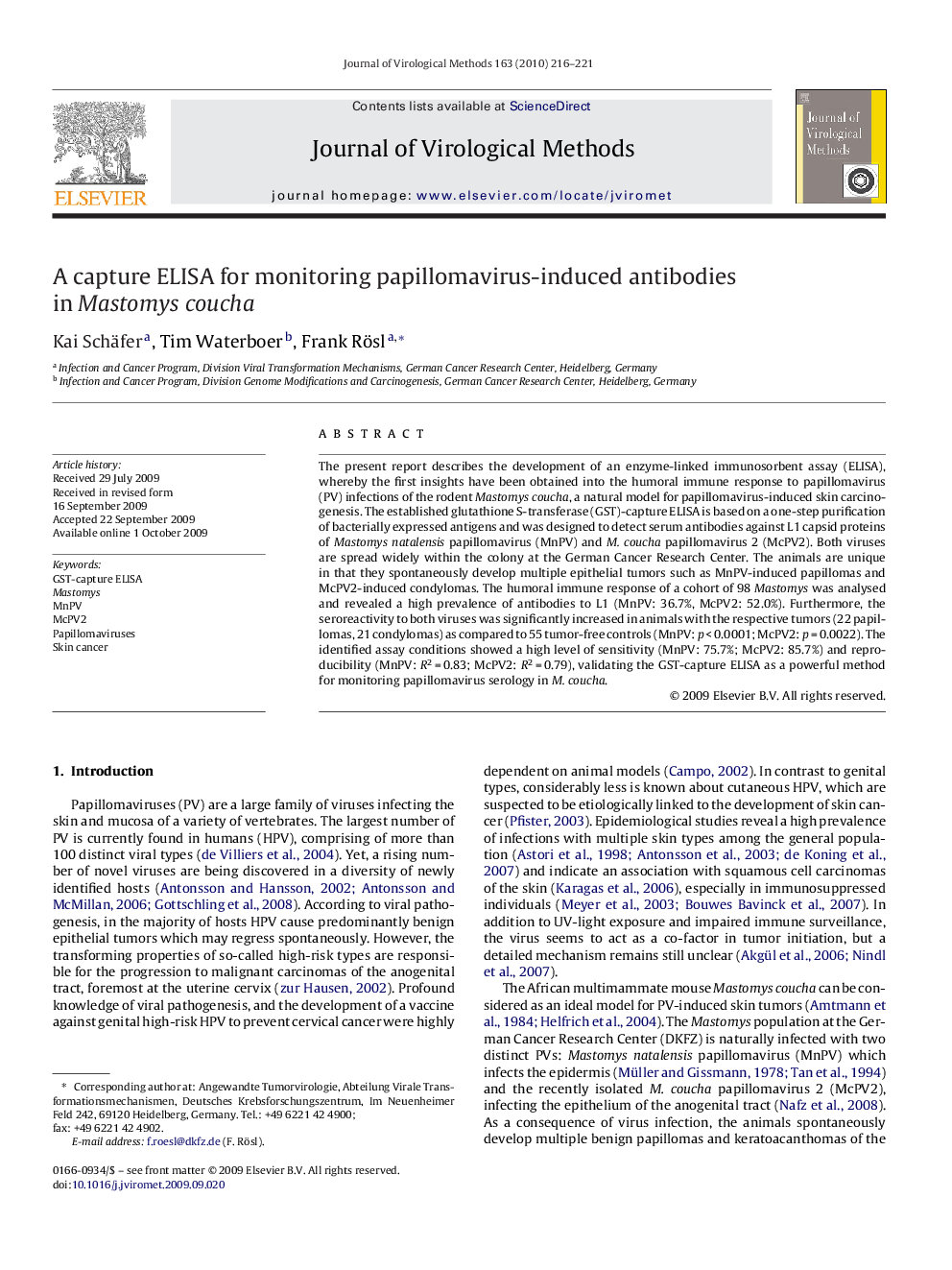| Article ID | Journal | Published Year | Pages | File Type |
|---|---|---|---|---|
| 3407323 | Journal of Virological Methods | 2010 | 6 Pages |
The present report describes the development of an enzyme-linked immunosorbent assay (ELISA), whereby the first insights have been obtained into the humoral immune response to papillomavirus (PV) infections of the rodent Mastomys coucha, a natural model for papillomavirus-induced skin carcinogenesis. The established glutathione S-transferase (GST)-capture ELISA is based on a one-step purification of bacterially expressed antigens and was designed to detect serum antibodies against L1 capsid proteins of Mastomys natalensis papillomavirus (MnPV) and M. coucha papillomavirus 2 (McPV2). Both viruses are spread widely within the colony at the German Cancer Research Center. The animals are unique in that they spontaneously develop multiple epithelial tumors such as MnPV-induced papillomas and McPV2-induced condylomas. The humoral immune response of a cohort of 98 Mastomys was analysed and revealed a high prevalence of antibodies to L1 (MnPV: 36.7%, McPV2: 52.0%). Furthermore, the seroreactivity to both viruses was significantly increased in animals with the respective tumors (22 papillomas, 21 condylomas) as compared to 55 tumor-free controls (MnPV: p < 0.0001; McPV2: p = 0.0022). The identified assay conditions showed a high level of sensitivity (MnPV: 75.7%; McPV2: 85.7%) and reproducibility (MnPV: R2 = 0.83; McPV2: R2 = 0.79), validating the GST-capture ELISA as a powerful method for monitoring papillomavirus serology in M. coucha.
